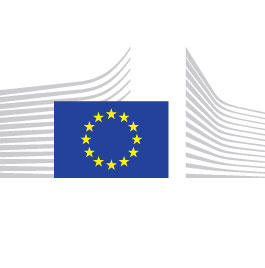
Robohub.org
EU launches world’s largest civilian robotics programme – 240,000 new jobs expected

The European Commission and 180 companies and research organisations (under the umbrella of euRobotics) have launched the world’s largest civilian research and innovation programme in robotics. Covering manufacturing, agriculture, health, transport, civil security and households, the initiative – called SPARC – is the EU’s industrial policy effort to strengthen Europe’s position in the global robotics market (€60 billion a year by 2020). The EC further describes how robots can contribute to a range of applications in a memo here. This initiative is expected to create over 240,000 jobs in Europe, and increase Europe’s share of the global market to 42% (a boost of €4 billion per year). The European Commission will invest €700 million and euRobotics will invest €2.1 billion.
European Commission Vice President @NeelieKroesEU, says: “Europe needs to be a producer and not merely a consumer of robots. Robots do much more than replace humans – they often do things humans can’t or won’t do and that improves everything from our quality of life to our safety. Integrating robots into European industry helps us create and keep jobs in Europe.” (SPEECH/14/421)
President of euRobotics Bernd Liepert says: “SPARC will ensure the competitiveness of European robotics industries. Robot-based automation solutions are essential to overcome today’s most pressing societal challenges – from demographic change to mobility to sustainable production”.
Robotics enables companies to continue manufacturing in Europe, where they might otherwise move operations to lower-cost countries. But the potential of robotics goes far beyond the factory: from helping nurses in hospitals to inspecting dangerous power plants and tedious farm work. Autonomous cars and drones are other examples of robots.
Background
The project is launched at the AUTOMATICA 2014 conference in Munich.
SPARC is open to all European companies and research institutions. The partnership launched today is based on a contract signed with euRobotics aisbl on 17 December 2013 (press release).
The first call for proposals related to SPARC are run under the pillar LEIT – Leadership in Enabling and Industrial Technologies of the new EU research and innovation programme Horizon 2020.
The next funding call will be published in October 2014 with an April 2015 deadline. Stay tuned via @RoboticsEU – find out more about EU support to robotics and examples of funded projects.
If you liked this article, you may also be interested in:
- Swiss to invest almost CHF30 million in digital fabrication research over next 4 years
- China takes long view in funding robotics, innovation
- Robot tourism coming soon to Korea: Masan Robot Land project finally breaks ground
- Russia looks inward and outward at Moscow’s 2013 Open Innovations Forum
See all the latest robotics news on Robohub, or sign up for our weekly newsletter.
tags: AUTOMATICA 2014, c-Business-Finance, cx-Research-Innovation, euRobotics, European Commission




